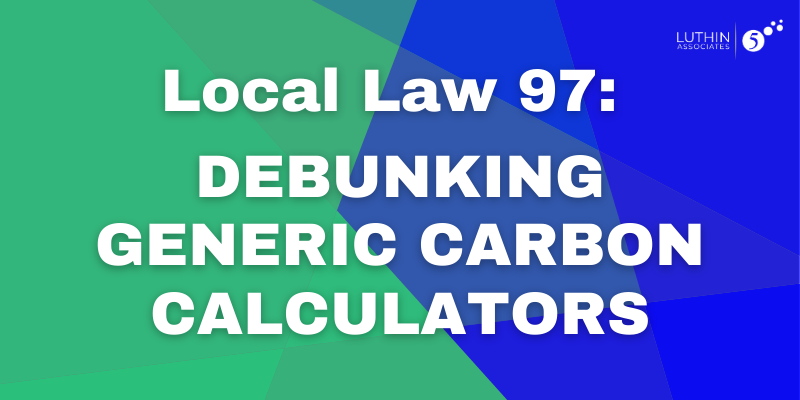Two weeks ago, ERCOT released its initial reserve margin estimates for the summer of 2020. The reserve margin is the difference between the peak forecasted load and the amount of installed generating capacity available to meet the grid’s electricity demand. This summer, ERCOT estimates that 82,403 MWs of installed generating capacity will meet a forecasted peak demand of 76,696 MWs. This equates to an estimated reserve margin of 10.6%, which is 2% more than the reserve margin that ERCOT reported going into the summer of 2019. ERCOT expects that an additional 7,633 MWs of generating capacity will be added to the grid in the next six months. Most of this new generation will be from renewable power sources and natural gas fired generating assets.
2 min read
Summer 2020 Reserve Margin Grows by 2%
By 5 on December 19, 2019
Topics: Markets ERCOT
1 min read
Excess Capacity in PJM
By 5 on December 18, 2019
Despite essentially flat growth in demand, the electricity generating capacity in PJM has grown by more than 15,000 MWs from 2009 to 2017. Almost all of this additional capacity has been in the form of new natural gas plants. As a result, the reserve margin (the amount of excess capacity above peak demand) in PJM has soared. In 2018, the expected summer reserve margin was 16.1%. The actual reserve margin was more than double what was forecasted, coming in at 32.8%. This reserve margin has been increasing with time. According to the North American Electric Reliability Corporation, the anticipated reserve margin in 2021 is 45%.
Topics: Markets PJM
3 min read
The Bad News Bears for Gas Producers
By 5 on December 18, 2019
It is hard to believe that natural gas traders and analysts remain bearish given current prices. But the amount of gas being produced is outpacing demand and continues to place downward pressure on prices. This supply and demand imbalance has caused both short and long-term gas prices to tumble. Prices for both the January 2020 contract and winter strip (Jan 2020 – Mar 2020) have dramatically fallen over the last month. Figure 1 shows how gas prices for the January contract rallied through the fall, reaching its peak of $2.94/MMbtu on November 5th and then settled at $2.22/MMBtu on December 9th – a decrease of nearly 25% in four weeks. Prices for the winter strip have followed a similar trend. Figure 2 shows longer-term market movements in gas futures since November. The blue bar in Figure 2 is the price for the January 2020 gas contract and calendar years 2020 through 2024 on November 5th. The black bar shows how those same contracts were trading on December 13th. While the biggest decrease was in the January contract and in calendar year 2020, prices fell across all calendar years to 2024.
Topics: Markets Natural Gas
2 min read
The Lingering Effects of a Texas Summer
By 5 on November 21, 2019
This past August, electricity prices in Texas hit historic highs over several days. Prices rose from the typical range of $20 to $30 per MWh to $9,000 per MWh during the second week of that month. Figure 1 shows daily prices during the week of August 12, 2019.
Topics: Markets ERCOT
2 min read
A Correction in Natural Gas Basis Prices
By 5 on November 21, 2019
Natural Gas basis prices for the winter of 2019/2020 have decreased by 28% since the middle of October. Figure 1 shows how the basis price for this winter started to rally in August, reaching its peak of $2.90/MMbtu on October 16th. Most believe that the strong rally was due to the TETCO natural gas pipeline explosion on August 1st near Danville, Kentucky. In the wake of that accident, the amount of natural gas moving through that pipeline was reduced by 15%. The reduction in gas volumes along this major interstate pipeline, which supplies the Northeast, had a bullish impact on basis prices for this winter, which rallied through September and early October.
Topics: Markets Natural Gas
3 min read
Upstate is Down and Downstate is Up
By 5 on October 25, 2019
Anyone from New York knows that New York is really made up of two states: upstate and downstate. Some will even put a finer point on this and claim that New York City is distinct from downstate and the same can be said of New York’s electricity markets. Today, there are two factors that have a significant impact on the price of electricity throughout New York. One of those factors is tied to regulatory developments in Albany and the other is connected to the way capacity has been trading across the state.
Topics: Markets NYISO
2 min read
Local Law 97: Debunking Generic Carbon Calculators
By Luthin Associates on October 24, 2019
New York City’s Climate Mobilization Act, especially Local Law 97, sparked the creation of generic carbon calculators for buildings to assess occupancy class and emission limits. Although intended to be helpful, not all are accurate.
Topics: Markets NYISO Sustainability Education Renewables
2 min read
What Goes Down, Must Come Up?
By 5 on October 24, 2019
In commodity markets, a bear market cannot stay bearish forever. Typically, a commodity market does not stay in backwardation (where prices get cheaper into the future) for long. The forward electricity markets in Texas have been in a backwardated state for a while as prices in the outer years have been steadily falling. However, it seems as though the market has found a support (floor).
Topics: Markets ERCOT
3 min read
A Tale of Two Power Markets
By 5 on October 24, 2019
Over the last few years, natural gas has become the fuel on the margin, meaning that the price of natural gas becomes the driver for wholesale electricity prices. Supplies of natural gas and the delivery systems necessary to transport that gas are both important factors that influence the price of electricity. Given the size of PJM, it should not be surprising that the forces affecting electricity prices in the eastern portions of PJM are different from those affecting prices in the western part of PJM. In August, a major interstate gas pipeline on the TETCO system in rural Kentucky exploded. Electricity markets in the eastern and western parts of PJM had significantly different responses to this explosion.
Topics: Markets PJM
3 min read
More Good News and Bad News for Natural Gas
By 5 on October 24, 2019
This week, a major milestone was reached in the natural gas market. For the first time in two years, the amount of natural gas in storage has exceeded the 5-year average. In Figure 1, the 5-year range of minimum and maximum amounts of gas in storage are shown in the area shaded in gray. The darker blue line is the 5-year average and the red line shows the amount of gas currently in storage. This chart shows that storage levels have been below the 5-year average for the last 25 months. At this time last year, the nation headed into winter with approximately 3,200 Bcf of gas in storage, roughly 15% below the 5-year average.






